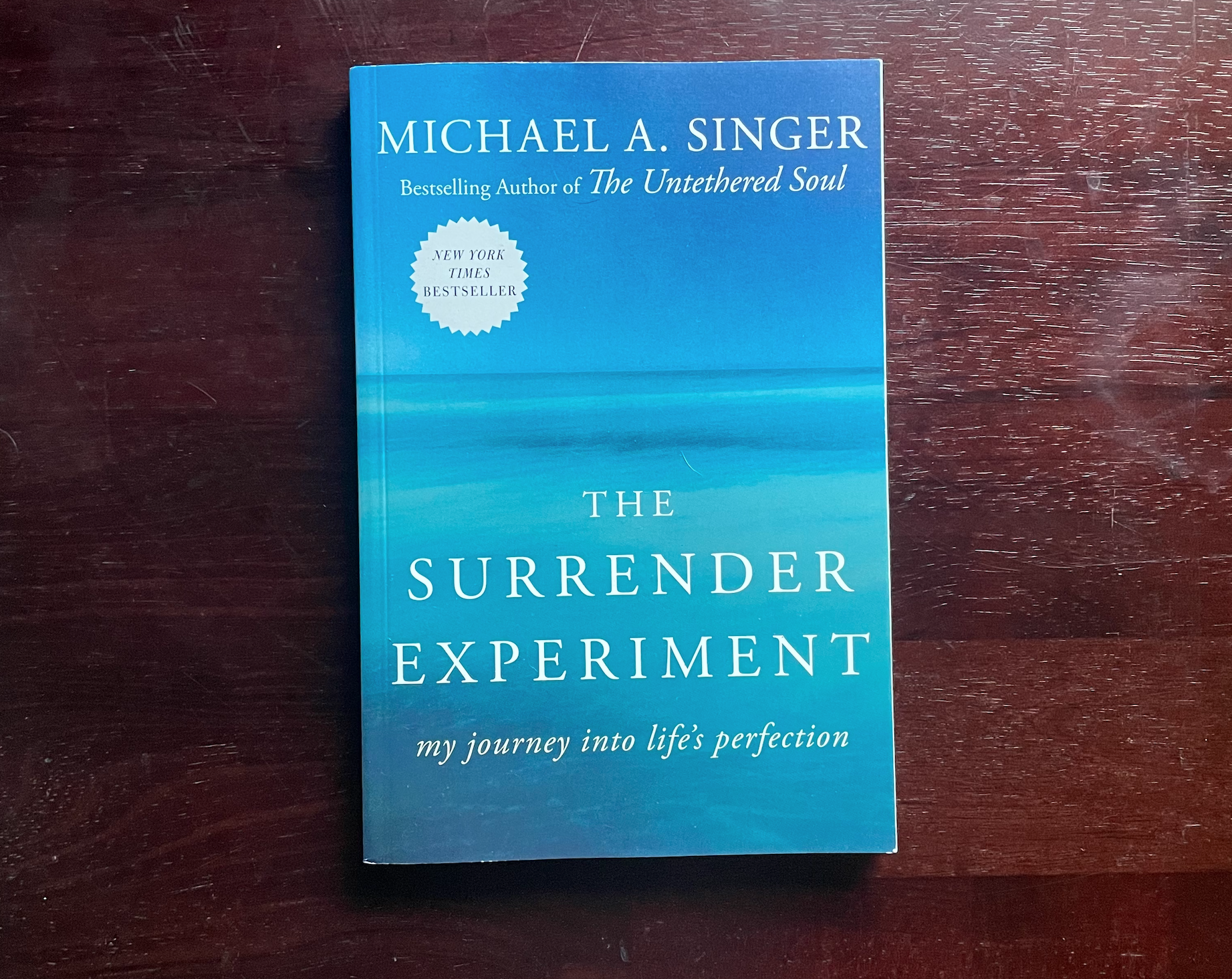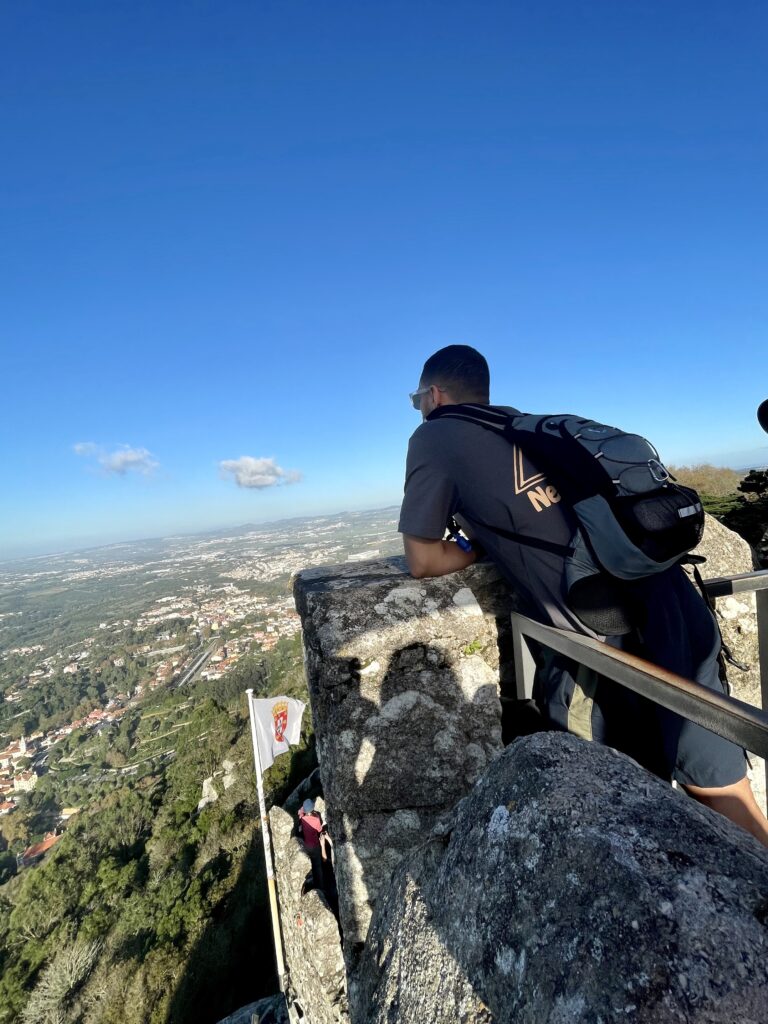In this post, I’ll be providing a brief summary and book review of “The Surrender Experiment: My Journey into Life’s Perfection” by Michael Singer.
Look for a link to buy the book at the bottom of this post—I think you’ll definitely want to buy it after reading this.
Without further ado, let’s jump into The Surrender Experiment summary and book review.
A Brief Summary of The Surrender Experiment
The Surrender Experiment is all about Michael A. Singer’s journey of surrendering to the flow of life. He goes from being a very analytically-driven economics graduate student with no sense of spirituality to a man living in solitude in the woods whose sole focus is mediation and self-connection to eventually an incredibly wealthy businessman who defies every imagination of what that looks like.
He writes about the power of getting out of our own way and simply letting life unfold in front of us. Early on in the book he shares the first moment he noticed the thoughts in his head and how everything changed after that. No longer was he stuck in his own thoughts, unable to separate himself from the constant chatter of the mind.
The “journey into life’s perfection” for Singer certainly wasn’t easy and took a lot of work, but it’s obvious it was the best decision he ever made.
What’s beautiful about it all is that readers get a first-hand glimpse of what it truly means to surrender to the flow of life. Reading the book will undoubtedly make readers question why they haven’t yet thrown themselves into whatever life has to offer.
There are just so many lessons from The Surrender Experiment that I believe are incredibly valuable for us in today’s day in age.
With that said, let’s dive into Michael Singer’s journey.
Michael Singer’s Humble Beginnings
It’s evident that who Singer was at the beginning of the book is completely different from the man writing to us on the final pages.
In the winter of 1970, he was a Ph.D. student who did not even have the vocabulary to call himself an atheist because he never focused any attention on anything remotely related to a higher power. He was simply focused on using his intellect and knowledge acquired through textbooks to get through his doctoral degree and become a college professor.
But one day, as he was sitting in his living room with the brother of his then-wife, he realized something so subtle yet so powerful—his “mind and emotions were something [he] was watching instead of being” (p. 8).
At this moment, he was able to watch his mental activity—all the thoughts and anxiety induced by them—like never before.
Though he shares that he was uncertain about what was transpiring, and wondering who this person was inside that was noticing his thoughts, he was finally “able to remain above [his mind] and quietly watch the thoughts being created” (p. 8)
In his words: “That subtle shift in my seat of awareness became a tornado that rearranged my entire life” (p. 8).
Shut this thing up!
One of the things I appreciated most, and that needs to be said in any summary of The Surrender Experiment, is that Singer is pretty transparent about his journey and all that it took to get to the place he eventually lands. One example of this comes at the beginning of the book when he talks about having a really difficult time finally being able to hear his thoughts.
He shares that once he became mindful of his mind, he couldn’t seem to shut it up. The more he heard it, the louder it was.
This is when he came across The Three Pillars of Zen. After reading this book, he realized that instead of reading and learning about the voice, he needed to be intentional about doing work to quiet it.
Thought I haven’t read Three Pillars yet, this is one of the main lessons I took away from The Surrender Experiment: if I want to eventually be able to surrender to the flow of life, I need to actually do the work, not just read about it.
“We walk around constantly trying to control and determine what will happen in our lives. No wonder there’s so much tension, anxiety, and fear”
— The Surrender Experiment (Singer, 2015, p. 4)
It was actually by reading Singer’s other book, The Untethered Soul, that I realized “I” am not my thoughts—I am the one who notices my thoughts.
Again, I still have a lot of work to do, especially when it comes to surrendering to the flow of life, but I can’t emphasize how powerful this was.
In a similar way to Singer, it’s been incredibly impactful to learn that I’m not a reflection of my thoughts. Rather, my mind—and the feelings that come from the thoughts running through it—is this thing with its own agenda. It’s separate from the deep-seated consciousness within me, the actual “I”.
True Surrender: Letting Go by Going Inside
The next few parts of the book are where Singer takes what he’s learned about his consciousness to the next level.
As he begins getting more connected to his actual “I”, he starts to let go of the person he formerly was. He begins spending more time in solitude, focusing much more on meditation, and withdrawing from his studies. In so doing, he learns just how much his likes and dislikes, however trivial those things may be, have dictated his life.
“What would happen if we respected the flow of life and used our free will to participate in what’s unfolding, instead of fighting it? What would be the quality of the life that unfolds? Would it just be random events with no order or meaning, or would the same perfection of order and meaning that manifests in the rest of the universe manifest in the everyday life around us?”
— The Surrender Experiment (Singer, 2015, p. 5)
He starts to see the power of not approaching situations with the thinking mind, of not listening to what his “rational”, thinking self is telling him about a new situation or person.
Time and again, he begins to see that most situations eventually unfold in much more fulfilling yet unexpected ways than his thinking mind would ever imagine.
From his surprising encounters with residents of a village in rural Mexico to the unbelievable opportunities he receives as a graduate student and professor, Singer is persuasive in the idea that we should consciously try to remove from the picture whatever we think and “believe” about the things in life we’re presented with.
This was by no means easy for him to do though. As he shares with readers, it took a great deal of meditation and spiritual practice to be able to successfully let go.
Another key lesson from The Surrender Experiment: the only way to let go is by going inside. As uncomfortable as this may feel, there’s beauty on the other side.
The Result of Surrendering to the Flow of Life
There’s a lot more to Singer’s journey that I won’t share in this summary and book review of The Surrender Experiment. This is mostly because I think what happens externally is less important than his internal growth.
An extremely brief summary of the rest of the book: He goes on to create several (very profitable) businesses, starts a non-profit temple that spiritual leaders from all over the world visit, finds a romantic partner and has a daughter, and many more successful endeavors.
“My formula for success was very simple: Do whatever is put in front of you with all your heart and soul without regard for personal results. Do the work as though it were given to you by the universe itself—because it was.”
— The Surrender Experiment (Singer, 2015, p. 133)
At the heart of everything was his ability to recognize and ignore his internal resistance, whether he was experiencing it related to something minor or the decision to let his most successful company be acquired.
When his mind said he shouldn’t do something or when he felt apprehensive about a situation, he ignored those thoughts and just went with it, not merely if it felt uncomfortable, but because it did.
Singer came to understand that only he could get in the way of the beautiful flow of life. As “whoo-whooey” as this may sound, it was another lesson from The Surrender Experiment that resonated with me very much. I thought about how many times my thoughts have gotten in the way of my life unfolding naturally.
Think about how different your life may look if you just let the flow happen, as opposed to trying to control it to match your desires and preferences.
What happens when those desires and preferences aren’t met? How do you end up feeling?
Now imagine going into every life situation completely open, not attaching yourself to any particular preference or outcome.
It’d be pretty difficult to be disappointed with something if you didn’t have any expectations in the first place.
Concluding my Summary and Book Review of The Surrender Experiment
As you can probably tell by now, there were many life lessons in The Surrender Experiment.
For me, it was incredibly powerful reading how far Singer had made it, and how he had done it. Through it all, he stuck to his principle of ignoring the internal chatter and continued to meditate at least twice a day while not making any major changes to his lifestyle.
“I clearly remember deciding that from now on if life was unfolding in a certain way, and the only reason I was resist it was because of a personal preference, I would let go of my preference and let life be in charge”
— The Surrender Experiment (Singer, 2015, P. 54)
The Surrender Experiment was also important for me to read at this stage of my life.
Even as I’ve leaped somewhat into the unknown at the beginning of my travel journey, I’ve realized that I’ve tried to control each step of the journey so much. The book made me wonder how different things may have been if I had just let transpire whatever was meant to be.
I’m really happy with where I’ve landed, no doubt about that: a month in Buenos Aires with two more to go and loving the city more than I could have imagined.
But, it does make me think, were things supposed to happen this way?
Was I supposed to be in Buenos Aires at this point in my life?
Was I supposed to leave my full-time job when I did?
It feels like the answer to all these questions is yes, and I suppose that’s good enough. But after reading The Surrender Experiment, I will make it a point to be more intentional with taking myself out of the picture and letting life do its work.
If this sounds like something of interest to you and if you’ve enjoyed reading this summary and book review of The Surrender Experiment, I would highly recommend reading the book, especially after reading The Untethered Soul (both by Michael Singer).
Let me know in the comments below if you’ve ever surrendered to the flow of life. What was the result?
‘Till Next Time, Travel Friends








One response to “Reviewing Michael Singer’s Thoughtful and Inspiring “The Surrender Experiment” ”
[…] trying not to think too hard about the situation and go with what life presents me with. No doubt about it, this is easier said than […]